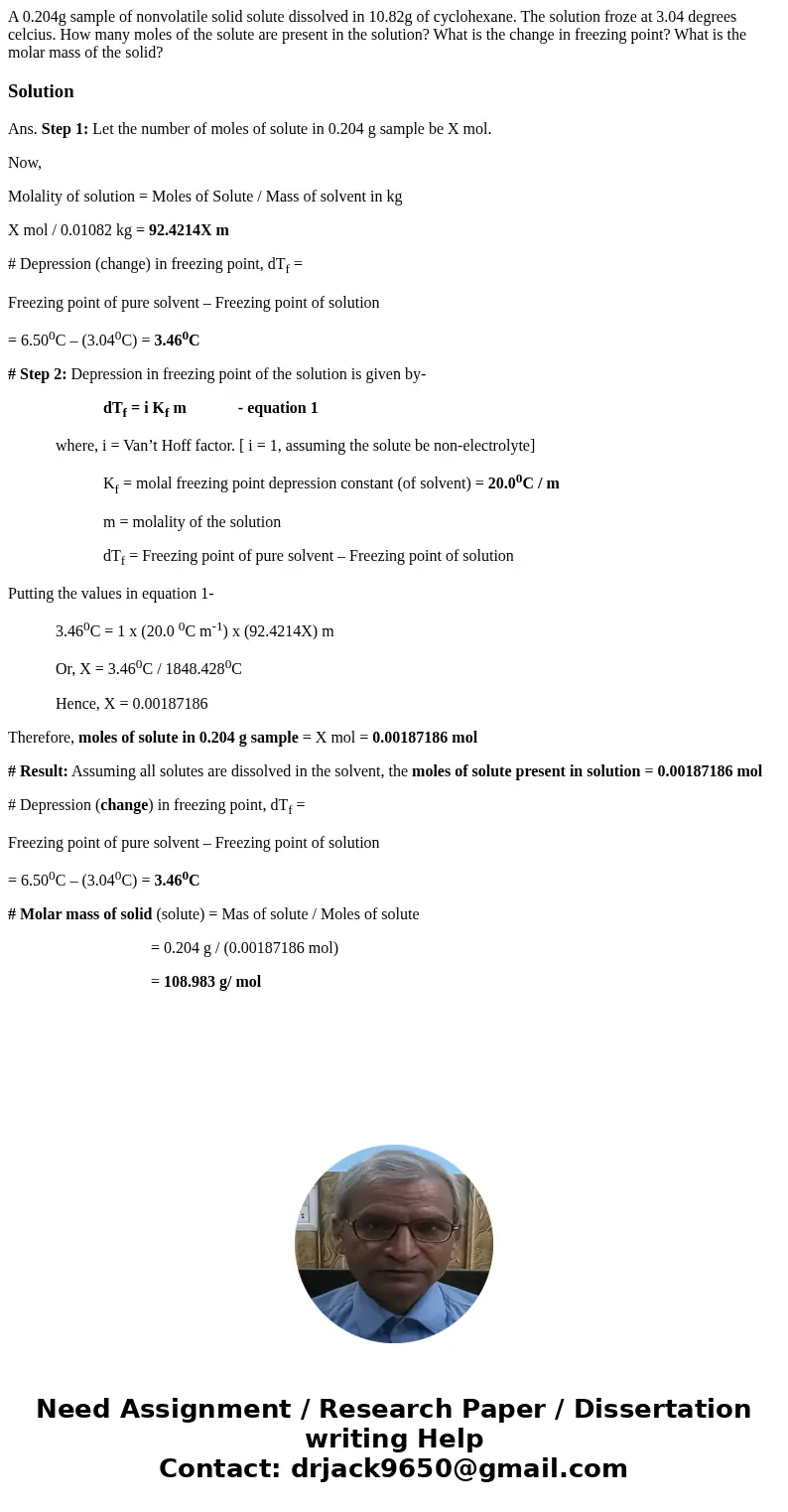A 0204g sample of nonvolatile solid solute dissolved in 1082
A 0.204g sample of nonvolatile solid solute dissolved in 10.82g of cyclohexane. The solution froze at 3.04 degrees celcius. How many moles of the solute are present in the solution? What is the change in freezing point? What is the molar mass of the solid?
Solution
Ans. Step 1: Let the number of moles of solute in 0.204 g sample be X mol.
Now,
Molality of solution = Moles of Solute / Mass of solvent in kg
X mol / 0.01082 kg = 92.4214X m
# Depression (change) in freezing point, dTf =
Freezing point of pure solvent – Freezing point of solution
= 6.500C – (3.040C) = 3.460C
# Step 2: Depression in freezing point of the solution is given by-
dTf = i Kf m - equation 1
where, i = Van’t Hoff factor. [ i = 1, assuming the solute be non-electrolyte]
Kf = molal freezing point depression constant (of solvent) = 20.00C / m
m = molality of the solution
dTf = Freezing point of pure solvent – Freezing point of solution
Putting the values in equation 1-
3.460C = 1 x (20.0 0C m-1) x (92.4214X) m
Or, X = 3.460C / 1848.4280C
Hence, X = 0.00187186
Therefore, moles of solute in 0.204 g sample = X mol = 0.00187186 mol
# Result: Assuming all solutes are dissolved in the solvent, the moles of solute present in solution = 0.00187186 mol
# Depression (change) in freezing point, dTf =
Freezing point of pure solvent – Freezing point of solution
= 6.500C – (3.040C) = 3.460C
# Molar mass of solid (solute) = Mas of solute / Moles of solute
= 0.204 g / (0.00187186 mol)
= 108.983 g/ mol

 Homework Sourse
Homework Sourse